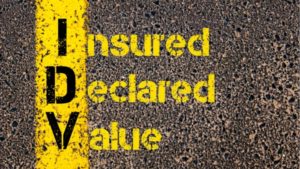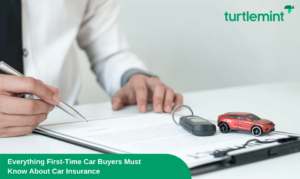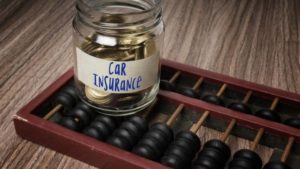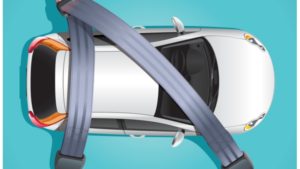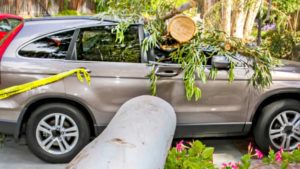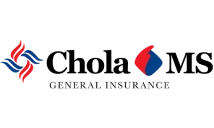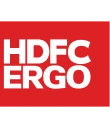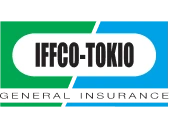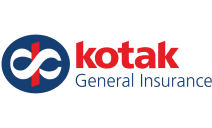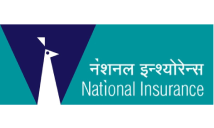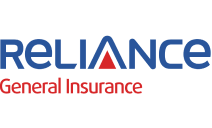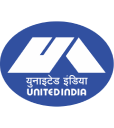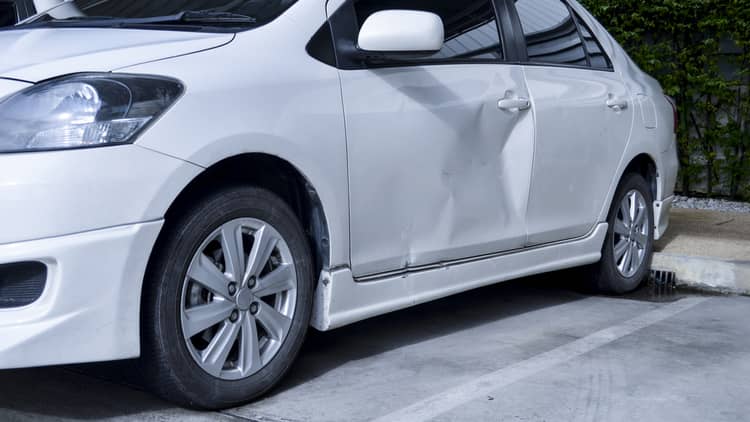
Table of Contents
- Own Damage Insurance Meaning
- Benefits of Own Damage Insurance
- Eligible to buy Own Damage Insurance?
- Who Should buy Own Damage Cover?
- Inclusions in OD Insurance
- Exclusions in OD insurance
- Calculating Own Damage Premium?
- Car insurance calculator
- Tips to Reduce Premium
- Factors affecting own-damage car insurance premium
- Renewing Own Damage insurance policy?
- Add-on cover can be bought with OD Insurance?
- How to claim car insurance for your own damage in India?
The Motor Vehicles Act, 1988 mandates every vehicle to carry third party coverage before it runs on the road. The third-party coverage provides coverage against third party liabilities that might incur if the vehicle damages third party property or causes injury or death to another individual. The third-party insurance cover, however, does not cover the damages suffered by the vehicle itself.
If you want coverage for the damages on your own vehicle, you need to opt for your own damage insurance plan. This cover is meant for the damages suffered by the vehicle, i.e. if your vehicle suffers damages or theft due to natural or man-made causes. While own damage insurance is available under comprehensive vehicle insurance policies, you can also opt for the standalone OD policy. Let’s understand how.
Standalone OD insurance meaning – what the plan is all about
A standalone own damage insurance plan covers only the damages suffered by the car. This policy does not include coverage for third party liabilities. This policy is issued for one year and can be bought only if you already have an independent third party liability policy. This means that the policy is not available unless a third party policy is already bought by the policyholder.
Benefits of own damage insurance
Here are the benefits of availing of an own damage cover –
1. All-round coverage
Since the own damage policy covers accidental and natural contingencies that might damage your car, it provides all-around coverage. Damages to your car involve considerable expenses on repairs. These expenses can cause a major financial strain. However, if you have your own damage insurance, the repair costs are shouldered by the insurance company allowing you financial relief.
2. Coverage against theft
Theft of the car causes a considerable financial loss. By covering such financial loss, own damage insurance gives you financial security and compensation to replace the lost car with a new one.
3. Add-on benefits
Under your own damage insurance, you can find optional add-on coverage benefits that help in enhancing the scope of coverage. Benefits like zero depreciation cover, no claim bonus cover, roadside assistance, etc. expand your coverage considerably thereby enhancing the claim pay-out.
4. Attractive discounts
There are attractive premium discounts under your own damage insurance. You can claim a discount of up to 50% by not making claims in your policy. Then, there are discounts for installing safety devices in the car, for opting for voluntary deductibles, for being a member of an Automobile Association, etc.
Who is eligible to buy their own damage insurance?
An own damage cover can be taken by any individual who owns a vehicle. The cover can be bought through a comprehensive policy that also covers third-party liability. However, if you want only a standalone OD policy, you need to have third party coverage before opting for the plan. If you can furnish proof of a valid third party cover on your vehicle, you can opt for a standalone OD policy too.
Who should buy their own damage cover?
The own damage insurance cover is suitable for all vehicle owners because it provides a wider scope of coverage. The policy covers the damages suffered by the vehicle due to natural or man-made calamities. Moreover, if your vehicle is stolen, then also you get financial assistance from the insurance company for the financial loss suffered due to theft. Since the repair costs are considerable and a possible theft causes a considerable financial loss, the own damage cover is suitable for all.
If, however, you do not use your vehicle too much or if your vehicle is very old you can do away with your own damage cover. In that case, you can simply opt for a basic plan, i.e. a third party plan.
Inclusions in own damage insurance
The coverage extended under its own damage cover is quite extensive. The policy allows coverage against the following contingencies –
- Natural calamities like earthquake, storm, cyclone, flood, hurricane, landslide, subsidence, tempest, etc.
- Man-made calamities like fire, explosion, self-ignition, riots, strikes, malicious acts, etc.
- Theft of the car
- Damage to the car when it is being transported from one place to another via road, rail, air or water
Exclusions in own damage insurance
Despite the wide scope of coverage, the following contingencies are not covered under an own damage policy –
- Deliberate damages
- Damages suffered due to attempted suicide or self-inflicted injuries
- Damages suffered when driving without a valid driving license
- Damages suffered when driving under the influence of drugs, alcohol or other intoxicating substances
- Damages suffered outside the Indian territorial boundaries
- Consequential losses
- Normal wear and tear or depreciation of the vehicle
- Mechanical or electrical damages or breakdown of the car
- Damages suffered when engaging in hazardous activities or in criminal acts
How to calculate your own damage premium?
The premium for an own damage insurance policy depends on a lot of factors. It also varies across insurance companies. So, to calculate the own damage premium, here are the factors that you must know about –
1. Make, model and variant
The make, model and variant of the car determines its market value. Depending on the market value, the coverage and the premium are determined. Premium cars have higher premiums compared to normal cars.
2. IDV:
IDV (Insured Declared Value) means the market value of the car after deducting depreciation based on the age of the car. IDV also represents the maximum coverage available under the own damage insurance policy. If the IDV is high, the premium would be higher and vice-versa.
3. Registration details
The registration date of the car reveals the age of the car based on which its value is depreciated. Thus, older cars have lower premiums and vice-versa. Similarly, the registration location also impacts the premium amount. Cars registered in metropolitan cities have higher premiums than cars registered in other places.
4. Claim history
If you have not made claims in the previous years, you are eligible for a no-claim discount. This discount reduces the renewal premium. Thus, depending on the claim history, the no claim bonus rate is determined which affects the premium rate.
5. Renewal date
If you opt for renewal within the due date, the premium would be low. However, if the policy has expired and then you renew it, the consequent premiums would be higher.
6. Add-ons selected
If you select the available add-ons, the premium would increase as each add-on comes with an additional premium amount.
7. Discounts available
Besides the no claim bonus, if you are eligible for other discounts in the own damage cover, your premium would be reduced.
So, keep these points in mind to calculate the own damage premium when buying the policy.
Car insurance calculator
While you are planning to purchase a car insurance policy, it is essential that you have an idea of the premium you will have to pay. Using a digital calculator, like the one offered by Turtlemint, you can easily check your insurance premium. By entering a few details, the premium for various plans could be calculated so you can compare the plans and make the decision accordingly. There are several factors that affect the calculation of your own damage insurance policy. These are:
- Geographic area
- Insured declared
- Value of your vehicle
- Displacement of the engine
- Type age and make of the vehicle
Tips to reduce premium payable against own damage insurance
There are simple tips and tricks that can help you cut on the insurance premium. The premium payable against own damage insurance can be reduced by following the steps mentioned below:
1. Optional deductibles
Optional deductibles are those amounts in own damage insurance, which you opt to pay at the time of claim settlement. Therefore, to reduce your own damage premium, you can opt to raise the optional deductible percentage.
2. No small claims
To maximize the profits a policyholder should focus on no-claim bonus. To get this, the policyholder should have a claim-free year. This can be attained by not making claims for small repairs or minor damages.
3. Avoid insurance policy lapse
Not renewing insurance policies on time might end up as higher premiums. Therefore, to avoid such instances renewal of policy is needed.
4. Transfer of no claim bonus
If you were having a comprehensive motor insurance policy, then you should transfer the accumulated discount on the existing insurance policy.
Factors affecting own-damage car insurance premium
You must be aware of the various factors that affect the own-damage car insurance premium. These are:
- Market value of car–
The existing market price of the car is one of the deciding factors in calculating the premium in the own-damage car insurance policy. - Displacement of your car–
Displacement in other words is also known as the cubic capacity of a car. It is directly proportional to the car’s speed. Therefore, the higher the cc, the higher will be the risk, this results in the own damage premium amount to be on a higher side. - Model of the car–
The car’s model also plays an important role while calculating the premium of the own-damage car insurance plan. If the car is on a costlier side, then the premium will automatically be on a higher side. - Age of the car–
Older cars tend to lose their value. So, the car’s age of the policyholder matters while calculating the premium. In simple words, the damage premium will be less, if the car is old. - No claim bonus–
If the policyholder has no claims in a year, then the no claim bonus percentage will help them to reduce their own damage premium amount. NCB can get you a premium discount up to 50%. - Opted add-ons
The type of add-on chosen by the customer in their own damage policy directly affects the premium.
How to renew your own damage insurance policy?
Own damage insurance renewal can be done online or offline. Here’s how –
Offline renewal
For renewing offline, you need to either contact an insurance agent or visit the branch of your insurance company. You would have to pay the renewal premium and the policy would be renewed after the renewal request is processed by the insurance company.
Online renewal
For instant renewals, you can choose the online option. To renew online, visit the website of your insurance company, enter your policy number, pay the renewal premium and renew online. Alternatively, you can visit https://www.turtlemint.com/car-insurance/ and compare different plans to find the best policy. Then, you can buy the plan online and get your coverage renewed instantly.
Remember, if you renew the policy within the due date, your policy would be renewed easily. However, if the due date has passed and your policy has expired, you would have to arrange for an inspection of your car and after the inspection is successfully done, the insurance company would allow the renewal of the policy.
What add-on cover can be bought with own-damage car insurance?
Other than providing insurance for your car, there are several other add-ons that the own-damage car insurance policy offers. These add-on covers are designed in such a way that, after paying some extra amount apart from the standard premium, the coverage of the own damage insurance policy increases. Some add-on covers to include in your existing insurance plan are:
1. Roadside assistance cover
This is one of the most beneficial add-on covers that got your back anywhere anytime on the road. In case your car stops working in the middle of a road, you can call your insurance company and they will immediately reach out to you for the required help.
2. Zero depreciation cover
When you file a claim, the depreciation value of your car and its parts are reduced from the claim bringing down the claim amount. However, if you have a zero depreciation cover, the cost of bearing depreciation will be incurred by the insurance company. Hence, if you have this add-on, when you file a claim, the depreciation cost will not be deducted.
3. Daily allowance cover
One of the setbacks of your car repair is you have to find another means of communication and pay those extra bucks every day. However, if you have daily allowance cover, this might not be your problem. Until you receive your car back from the garage, the insurance company will provide you with the daily cost of communication. You can book a cab of your choice as well.
4. Key protect cover
Keys are very prone to get lost. It may slip from your pocket or you may forget it somewhere. If you have a key protector cover, your insurance company will pay you the cost of replacing new keys.
5. Consumables cover
For a car, the lubricants are the consumables. There are different consumables like oil, brake oil, engine oil, AC gas, steering oil, coolant, etc. When you purchase a consumable cover for your car, the insurance company helps you pay the cost of the consumables.
The story does not end with purchasing a car. Deciding and purchasing the right kind of insurance policy and the add-on cover is equally essential. You must explore all the available options for your four-wheeler and then purchase what all seems beneficial. When you plan to purchase an add-on, make sure you need it. Also, by following some basic rules, you can easily reduce the premium. Make sure you renew your premium before it expires in order to stay updated and receive bonuses and discounts on renewal.
How to claim car insurance for your own damage in India?
If you incur a claim in your own damage insurance policy, you can initiate the claim process. The steps are as follows –
- Inform the insurance company immediately after you suffer a claim. This helps in registering the claim for the process to start.
- Once registered, the insurance company would also direct you to the nearest preferred workshop wherein you can get cashless claims
- Take your car to the workshop and the insurer’s surveyor would go to the workshop to check the damages
- Then the surveyor would submit the survey report based on which the claim would be approved
- After the approval is given, the garage would be instructed to start the repair work of the vehicle and the bills would be handled directly by the insurer
- Once the repairs are completed, fill and submit the claim form with other relevant documents for settlement
- After the claim is settled, you can take delivery of your car
- In case of theft, report the same to the police and file an FIR. If the police is not able to trace the vehicle, they would then issue a certificate of non-traceability. You need to submit the certificate for an insurance claim.
- If you get your car repaired at a non-preferred garage, i.e. a garage not tied up with the insurance company, you would have to bear the repair costs yourself. After repairs, fill and submit the claim form along with the relevant documents and the claim would be reimbursed
If, however, you have bought your own damage insurance policy from Turtlemint, you can call Turtlemint for claim assistance. Call the toll-free number 1800 266 0101 or drop in a mail at support@turtlemint.com and Turtlemint would help you with the claim settlement process.
The own damage insurance cover is a valuable cover for your car which provides all-around financial protection. So, opt for the cover and get complete financial security against unforeseen financial contingencies.
Know – How to Check Vehicle Insurance Policy Status?
FAQs: Standalone Own Damage (OD) Insurance
1. What documents are needed for your own damage insurance claim settlement?
For settlement of your own damage claim, the following documents should be submitted along with the filled and signed claim form –
- Copy of your identity proof
- Copy of the driving license
- Copy of the RC book of the car
- Police FIR in case of theft
- Policy bond or Insurance Certificate
- Any other document required by the insurance company.
2. How to buy your own damage insurance policies?
You can buy the policy online or offline. For buying offline you can get in touch with an insurance agent or visit the insurance company’s office. The online mode of buying is easier as you can buy the policy online instantly. Just visit the insurer’s website, provide your car’s details, pay the premium and buy the plan. You can also buy a suitable own damage insurance policy through Turtlemint’s platform which allows you to compare between the available plans and then buy the most suitable policy. Just visit https://www.turtlemint.com/car-insurance/, provide your car’s details and then get to check the quotes of different plans. Select a plan based on the coverage offered and the premium rate, fill up an online proposal form, pay the premium and the policy would be issued instantly.
3. Is the premium for own damage higher than that of third party plans?
Yes, it is because own damage plans provide a wider scope of coverage than third party plans. Premiums are, therefore, higher to compensate for the wider risk undertaken by the insurance company.
4. How many add-ons can I choose under my own damage cover?
You can choose as many add-ons that you want. However, remember that each add-on would include an additional premium. Moreover, you should assess the suitability of every add-on before you add it to your own damage plan.
5. Would I lose the no claim bonus if I do not renew my own damage insurance policy on time?
If your car insurance policy expires, the accumulated no claim bonus is retained for up to 90 days post the expiry date. If you renew the policy within this period, you can retain the no claim bonus and use it to claim a premium discount on renewal. However, if you do not renew the policy within 90 days of lapse, the no claim bonus would also lapse and become zero.
Found this post informational?
Browse Turtlemint Blogs to read interesting posts related to Health Insurance, Car Insurance, Bike Insurance, and Life Insurance. You can visit Turtlemint to Buy Insurance Online.

